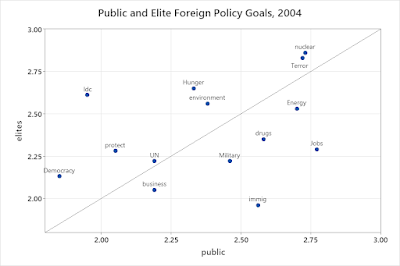After I finished my last post, it occurred to me that if people in rural areas felt "left behind," that should lead to a decline of confidence in institutions. The General Social Survey has a series of questions about confidence in "the people running" various institutions. For most of them, there's been a long-term decline (see this post): the question I'll consider here is whether that decline has been larger in rural areas. By and large, it has: taking the twelve that have been asked about since the 1970s, the median correlation of confidence with time is -.115 for people living in MSAs, -.15 for people living in "other urban" counties, and -.18 for people living in rural areas. Two of them stood out as especially large gaps: medicine and education. The figures show means by place of residence over time:
There's a lot of sampling variation in the individual years, so I include smoothed estimates. Their exact shape should not be taken too seriously, but it's clear that in the 1970s and 1980s confidence in education was generally higher in rural areas and "other urban" than in MSAs, and in recent years the difference has disappeared.
In the 1970s, confidence in medicine was higher in towns and rural areas than in MSAs: now it is lower.
Why would those two institutions show a particularly large decline in confidence in rural areas? One possibility is that it's part of a general decline in trust in science and experts, maybe because they are all seen as part of a distant elite. However, there's also a question about confidence in "the scientific community," and the trends for that are about the same in all types of places. That suggests that the explanation is something specific to medicine and education.
There has been a trend towards geographic concentration of medical services, so people in rural areas are less likely to have medical providers in the community or nearby. This could help to explain the relative decline in confidence. For education, there was also a process of consolidation as small school districts were merged into larger districts. That is, people in rural areas didn't have as much connection to and control of the schools as they previously had. Although most of the consolidation took place in the 1950s and 1960s, the regional schools started with the teachers and administrators who had been in the local schools, so it may have taken a while for perceptions to change.
The GSS also had a question on how much satisfaction you get from "the city or place you live in." Unfortunately, they dropped the question in the mid-1990s, but there's a striking trend in the years before then. In the 1970s, people in rural areas were substantially more satisfied than people in MSAs; that advantage was gone by the 1990s. Hopefully, there are questions that are similar enough to take the story up to the present: if I find any, I'll talk about them in a future post.





